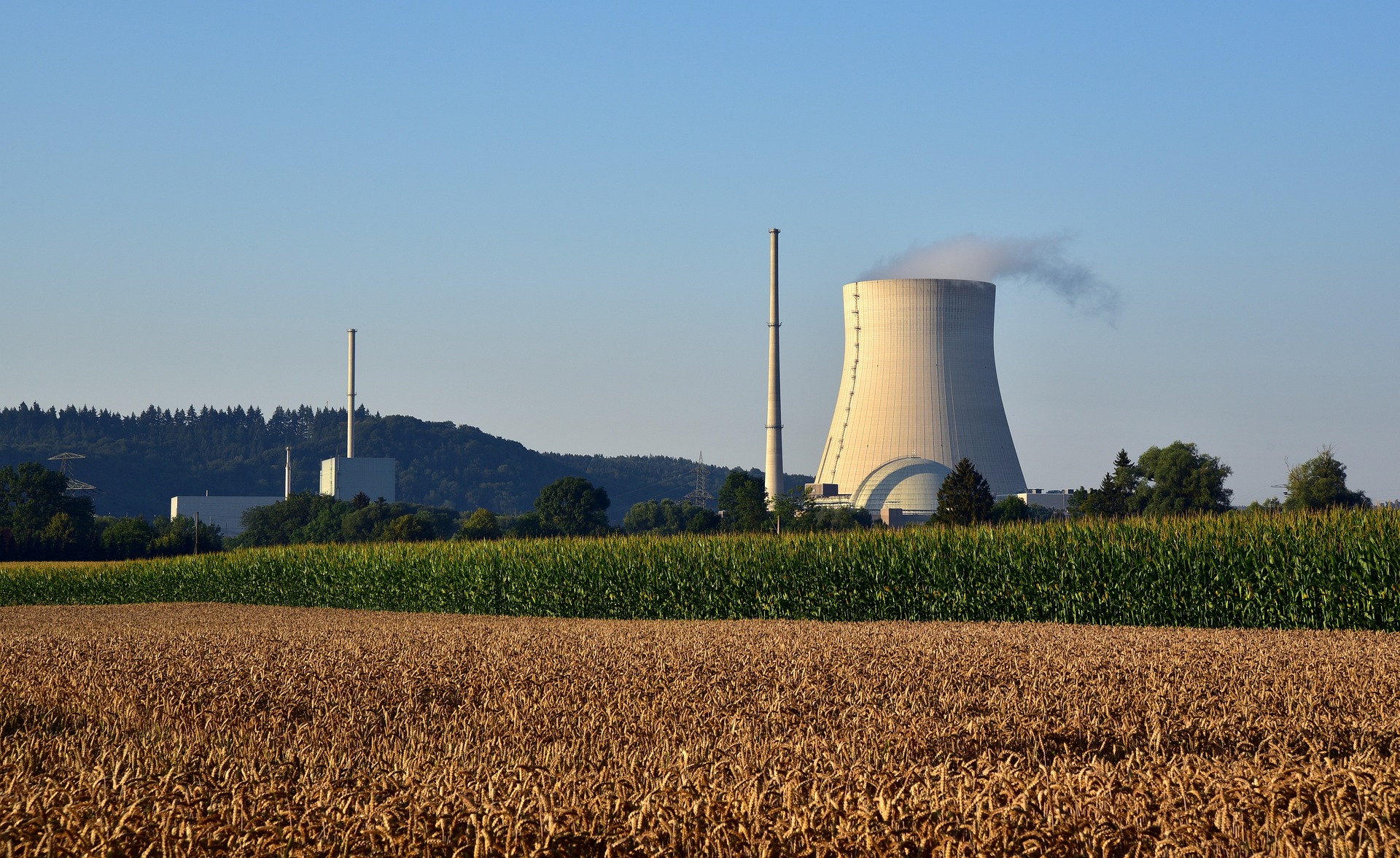Bella Cooper-Brown reviews a recent lecture at the Department of Physics by Professor Eugene Shwageraus, from the University of Cambridge.
Eugene Shwageraus is a name that draws almost as much intrigue as the lecturer’s chosen topic: the myths surrounding nuclear fission energy. It was abundantly clear that passion for nuclear energy was the driving force which brought Shwageraus, whose research at Cambridge explores the design of advanced nuclear energy systems, to the Department of Physics’ Martin Wood lecture theatre. The talk, entitled “Nuclear Energy: Myth, Reality, Necessity,” was organised as part of a series by the University’s Physics Society. Early into the lecture, he made plain his opinions regarding nuclear energy, stating, ‘it is an instrument and if climate change is your goal, this instrument cannot be dismissed.’
The reputation of science is analytical and lab-coat clad, but without effective communication, much of its research would go to waste. Today, science communication seems to be split down the middle between disseminating information and battling against misinformation. Shwageraus’ talk was largely dedicated to the latter battle, tackling the myths of carbon emissions, costs, sustainability, safety and waste. Some of these myths are easier to dispel than others, in particular the myth surrounding concerns of significant carbon emissions. Nuclear energy is in fact equivalent in its carbon emissions to offshore wind, and whose output constitutes a fraction of the carbon emissions of geothermal or solar energy.
The high costs associated with starting a nuclear power plant are largely due to the interest accrued by borrowing the costs themselves. Nuclear energy projects are unhelpfully burdened by loans with higher interest rates due to the high-risk reputation of nuclear energy- a bit of a funding Catch-22. In the case of the Hinkley Point C nuclear power plant, this interest cost (73€ per MWh) was over 64 percent of the total price paid per MWh (113€ per MWh in 2019 prices). Costs in Europe and North America for first-time projects are almost three times higher than in the rest of the world, mainly ballooned by administrative fees. Intermittent energy sources such as solar and wind, even if cheaper, cannot displace fossil fuels beyond a limited fraction of energy.
The sustainability and flexibility of nuclear power is a further concern. Uranium is mined primarily from the Earth’s crust, but developments in the mining of uranium from seawater are soaring. This presents an exciting timeline for the future of nuclear energy. Since the uranium found in seawater is in chemical equilibrium with the uranium in the rocks of the seabed, it could be a potentially inexhaustible fuel source. Flexibility in energy production is largely the result of economic drivers. Reactors are pushed to recoup costs and so rarely operate below maximum output. In France, where nuclear energy contributes to the majority of energy on the grid, power manoeuvring is more common, involving the scaling up or down of a power plant’s output.
It’s a brave job, taking on the PR challenge of nuclear energy. Although the nuclear energy accidents that spring to mind are all fission-related, the UK government research organisation dedicated to nuclear fusion energy research is the UK Atomic Energy Authority. The very name makes the clear choice to skirt around the word “nuclear”, because even the word is enough to cause alarm! Dispelling this panic is one of the main barriers to increasing the fraction of nuclear energy on the grid.
This panic spiked again on the 4th March, 2022 when Russia occupied the Ukrainian power plant at Zaporizhzhia. Both sides relied on the notoriety of Chernobyl in the public eye to increase pressure on allies and opponents. Ukraine hoped to garner further support for their military defence while Russia anticipated that the threat might empower them to strengthen their grip on the surrounding territory. The International Atomic Energy Agency warned, ‘[a]ny military firepower directed at or from the facility would amount to playing with fire, with potentially catastrophic consequences.’ Shwageraus held a more optimistic stance, arguing that the consequences would be likely limited to the site of the nuclear power plant. Although he expressed sympathy for the political position forced upon Ukraine, he noted, ‘both sides are trying to weaponize the consequences of something going wrong … This is irresponsible. It’s not going to be the end of Europe.’
The majority of questions fielded from the audience were concerned with the repercussions following the nuclear accidents in Fukushima and Chernobyl. While there were no known radiation-related health effects in Fukushima, one in 10 surveyed respondents thought there were above one million radiation-related deaths. In Chernobyl, public perception of numbers was similar. This notwithstanding, acute radiation sickness caused by the accident resulted in 28 deaths within the first 3 months, as well as approximately 60 eventual deaths from thyroid cancer, as stated by Shwageraus in the lecture. He noted there were an additional two deaths due to direct exposure to the initial explosion, and the IAEA attributes one fatal cardiac arrest to the aftermath. Shwageraus stated, ‘the decision to evacuate Chernobyl and Fukushima was wrong. Radiation in Pripyat? Higher than before the accident, but lower than background radiation in Finland today.’
Background radiation estimates found in The Chernobyl Gallery broadly corroborated Shwageraus’ claims. It does depend on which part of Pripyat, northern Ukraine, you are looking at, but most of Pripyat experiences less than 7 mSv of annual background radiation, while according to The Chernobyl Gallery, Finland has an average of ‘more than 7 mSv annually’. Shwageraus comes across not as dismissive of concerns, but as keen to dispel myths that are actively harmful. Annual deaths attributed to coal mining and pollution are killers far deadlier than radiation, but there is no award-winning HBO series about the 1,549 fatalities of the Benxihu Colliery gas and coal-dust explosion.
The safety and waste of nuclear power hold reputations that have been polluted largely by the nuclear weapons industry. Indeed, the historic challenges associated with waste management of the two are often conflated. Sellafield alone contributes 75.6 percent of the cost of cleaning up Britain’s historic nuclear sites, a task undertaken by the Nuclear Decommissioning Authority. The nuclear waste at Sellafield is an easy target for opponents of nuclear energy, despite being linked to nuclear weapons fallout. Modern nuclear power plants have fully internalised waste management programmes that the industry funds, notwithstanding lingering public perception that these are government-subsidised.
Nuclear waste becomes progressively more benign the longer it is stored, and yet presents a far more controversial issue than the storage of permanently toxic chemical waste. Salt formations in Germany are used for the underground storage of arsenic, a political impossibility for nuclear waste. One method of waste management includes the cooling of nuclear waste in pools. Shwageraus tells the audience that the radiation dosage is so safe you could probably swim in one, so long as you don’t touch the waste at the bottom. Dreams of nuclear-heated swimming pools radiate through the chilly lecture theatre. I begin to wonder if swimming in such a pool might actually be safer than Oxford wild swimming.
Shwageraus’ lecture was considered thoroughly. The questions from audience members roughly doubled the lecture’s runtime from one hour to two, and I have no doubt that further questions were flooding his inbox immediately afterwards. This passion might be exactly what we need for the future of nuclear energy. Shwageraus certainly paints this future brightly, telling us, ‘today’s reactors can be built for a century. It’s not fiction. It’s an engineering challenge with known solutions.’





